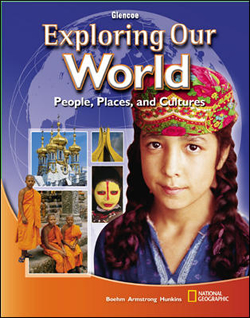
Exploring Our World: People, Places, and CulturesChapter 18: North Africa, Southwest Asia, and Central Asia TodayChapter OverviewsMany countries in North Africa, Southwest Asia, and Central Asia are rich in oil and natural gas resources. They supply much of the energy for countries around the world. Political unrest and wars, however, have troubled the region. Different standards of living in the region result from countries’ access to oil and gas reserves and from the conflict within an area. While some North African countries enjoy high incomes from oil reserves, others have developing economies. Egypt has a developing economy that is also a republic. Libya has great wealth because of oil, although it was ruled for decades by a dictator. Tunisia, North Africa’s smallest country, has a growing tourism industry because of its coastal location and mild climate. It has one of the lowest rates of poverty in Africa because leaders have provided health care and education. Algeria is North Africa’s largest country; although it has oil and gas, there are not enough jobs for the growing population. Morocco, in Africa’s northwest corner, is a constitutional monarchy and also has a growing tourism industry. In Southwest Asia, religious and ethnic conflicts affect the rest of the world because of the area’s oil and gas resources. Southwest Asian countries along the eastern Mediterranean Sea have mild climates and fertile land. Turkey, Syria, Lebanon, Jordan, Palestinian Territories, and Israel have areas of fertile coastal plains that have supported agriculture. Most people live in these areas. Some of these countries also endure ongoing conflicts that have resulted in violence and war. In the Arabian Peninsula, oil exports are important to the economy. Saudi Arabia, Oman and Yemen, and the countries of the Persian Gulf have important oil resources. In Iran, Iraq, and Afghanistan, conflict and war have forced governments to change. As a result of wars with the United States, Iraq and Afghanistan are struggling to build stable democracies; Iran’s Muslim leadership, however, refuses Western influences. Valuable natural resources are helping the people of Central Asia overcome the limitations of the area’s harsh environment. Minerals and agriculture are important resources, and some countries have oil and gas reserves. The countries are spread across land east of the Caspian Sea. The republics of Central Asia, which are all Islamic countries, are working to improve their economies after years of Communist rule. The Caucasus countries are new nations with diverse ethnic groups. Like the Central Asian Republics, they were once part of the Soviet Union. Their mild climates support commercial farming. Two countries, Georgia and Armenia, are predominantly Christian. |  |















